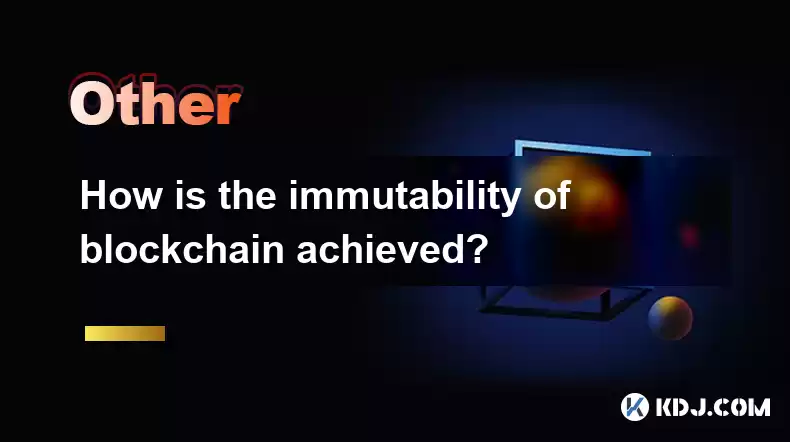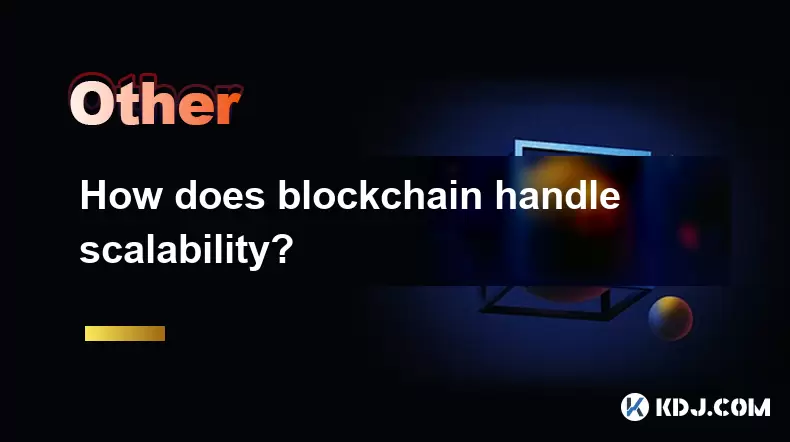-
 Bitcoin
Bitcoin $112400
-1.07% -
 Ethereum
Ethereum $3409
-3.27% -
 XRP
XRP $2.784
-6.60% -
 Tether USDt
Tether USDt $0.9997
-0.03% -
 BNB
BNB $739.3
-2.09% -
 Solana
Solana $158.0
-2.90% -
 USDC
USDC $0.9998
-0.02% -
 TRON
TRON $0.3213
-0.94% -
 Dogecoin
Dogecoin $0.1929
-5.01% -
 Cardano
Cardano $0.6974
-2.82% -
 Hyperliquid
Hyperliquid $36.69
-2.31% -
 Sui
Sui $3.327
-4.80% -
 Stellar
Stellar $0.3672
-5.18% -
 Chainlink
Chainlink $15.65
-3.07% -
 Bitcoin Cash
Bitcoin Cash $525.0
-1.68% -
 Hedera
Hedera $0.2291
-6.00% -
 Avalanche
Avalanche $20.91
-2.96% -
 Ethena USDe
Ethena USDe $1.000
0.00% -
 Toncoin
Toncoin $3.520
-1.12% -
 UNUS SED LEO
UNUS SED LEO $8.968
0.14% -
 Litecoin
Litecoin $105.7
0.26% -
 Shiba Inu
Shiba Inu $0.00001181
-1.79% -
 Polkadot
Polkadot $3.492
-2.08% -
 Uniswap
Uniswap $8.800
-3.10% -
 Dai
Dai $0.9999
-0.01% -
 Monero
Monero $289.9
-3.17% -
 Bitget Token
Bitget Token $4.243
-1.27% -
 Pepe
Pepe $0.00001006
-3.67% -
 Cronos
Cronos $0.1248
-5.68% -
 Aave
Aave $249.7
-2.50%
How is the immutability of blockchain achieved?
Immutability in blockchain ensures data integrity through cryptographic hashing, consensus mechanisms, and decentralization, making alterations nearly impossible.
Apr 27, 2025 at 01:42 pm

The concept of immutability in blockchain technology is a cornerstone that ensures the integrity and security of the data stored within the network. Immutability refers to the inability to alter, delete, or change data once it has been recorded on the blockchain. This characteristic is crucial for maintaining trust and transparency in decentralized systems. The immutability of blockchain is achieved through a combination of cryptographic techniques, consensus mechanisms, and the decentralized nature of the network itself. Let's delve deeper into how these elements work together to create an immutable ledger.
Cryptographic Hashing
At the heart of blockchain's immutability lies cryptographic hashing. Each block in a blockchain contains a list of transactions, a timestamp, and a reference to the previous block in the form of a hash. A hash is a fixed-size string of characters generated by a hash function, which takes an input and produces a unique output. In the context of blockchain, the hash of a block is created by hashing the block's header, which includes the hash of the previous block, the Merkle root of the transactions, the timestamp, and the nonce.
- The hash function used in most blockchains, such as SHA-256, is designed to be one-way, meaning it is computationally infeasible to reverse-engineer the input from the output.
- Any change to the data within a block, even a single character, will result in a completely different hash. This property ensures that once a block is added to the chain, altering it would require recalculating the hashes of all subsequent blocks, which is practically impossible due to the computational power required.
Consensus Mechanisms
Another key factor in achieving immutability is the consensus mechanism employed by the blockchain network. Consensus mechanisms are protocols that ensure all participants in the network agree on the state of the ledger. Popular consensus mechanisms include Proof of Work (PoW) and Proof of Stake (PoS).
- Proof of Work (PoW), used by Bitcoin, requires miners to solve complex mathematical puzzles to add a new block to the chain. This process, known as mining, is resource-intensive and time-consuming, making it extremely difficult for malicious actors to alter the blockchain.
- Proof of Stake (PoS), used by Ethereum 2.0, selects validators based on the number of coins they hold and are willing to "stake" as collateral. Validators are chosen to create new blocks and validate transactions, and any attempt to alter the blockchain would result in the loss of their stake.
Decentralized Network
The decentralized nature of blockchain networks also plays a crucial role in maintaining immutability. Unlike traditional centralized systems, where a single entity controls the data, blockchain networks are distributed across numerous nodes, each maintaining a copy of the entire ledger.
- Nodes in the network constantly communicate and verify the integrity of the blockchain. If a malicious actor attempts to alter a block, the majority of the nodes would reject the altered version, preserving the original data.
- The 51% attack, where a group of miners control more than half of the network's mining power, is theoretically possible but becomes increasingly difficult as the network grows. Even in the event of such an attack, the decentralized nature of the network makes it challenging to sustain long-term control.
Block Confirmation and Time
Block confirmation and the passage of time further enhance the immutability of the blockchain. Once a block is added to the chain, it is considered confirmed, but the level of security increases with each subsequent block added on top of it.
- The longer a block remains in the chain without being altered, the more secure it becomes. For example, in Bitcoin, a transaction is considered secure after six confirmations, meaning six blocks have been added after the block containing the transaction.
- The time factor makes it increasingly difficult for malicious actors to alter the blockchain, as they would need to redo the work for all subsequent blocks within a short window, which is practically impossible in large, established networks.
Smart Contracts and Immutability
In addition to the core blockchain structure, smart contracts contribute to the immutability of data. Smart contracts are self-executing contracts with the terms directly written into code. Once deployed on the blockchain, they cannot be altered.
- Smart contracts execute automatically based on predefined conditions, ensuring that the agreed-upon actions are carried out without the possibility of interference.
- Any attempt to alter a smart contract would require changing the underlying code, which, as discussed earlier, is extremely difficult due to the cryptographic and consensus mechanisms in place.
Immutable Data Storage
Finally, immutable data storage solutions built on top of blockchain technology further enhance the security and integrity of data. These solutions use blockchain to store data in a way that it cannot be altered or deleted.
- Immutable data storage platforms like InterPlanetary File System (IPFS) use blockchain to create a permanent and verifiable record of data, ensuring that once data is stored, it remains unchanged.
- These platforms leverage the same cryptographic and consensus mechanisms as the underlying blockchain to maintain the immutability of the stored data.
Frequently Asked Questions
Q: Can a blockchain ever be altered if enough nodes agree to change it?
A: While theoretically possible, altering a blockchain would require a majority of the nodes to agree on the change, which is highly unlikely in large, decentralized networks. The consensus mechanisms and cryptographic hashing make such an event extremely difficult and resource-intensive.
Q: How does immutability affect the scalability of blockchain networks?
A: Immutability can pose challenges to scalability, as the need to store and verify all historical data can increase the size of the blockchain and the computational resources required. However, various solutions, such as sharding and off-chain transactions, are being developed to address these issues.
Q: Are there any blockchains that are not immutable?
A: Some private or permissioned blockchains may allow for the alteration of data under certain conditions, as they are controlled by a central authority. However, public blockchains, like Bitcoin and Ethereum, are designed to be immutable to maintain trust and security.
Q: How does immutability impact the privacy of users on a blockchain?
A: Immutability can affect privacy because once data is recorded on the blockchain, it remains there permanently. This can be mitigated through the use of privacy-enhancing technologies like zero-knowledge proofs and ring signatures, which allow for the verification of transactions without revealing sensitive information.
Disclaimer:info@kdj.com
The information provided is not trading advice. kdj.com does not assume any responsibility for any investments made based on the information provided in this article. Cryptocurrencies are highly volatile and it is highly recommended that you invest with caution after thorough research!
If you believe that the content used on this website infringes your copyright, please contact us immediately (info@kdj.com) and we will delete it promptly.
- BlockDAG, SEI, Ethena: Top Crypto Performers Under the Microscope
- 2025-08-03 10:50:16
- Bitcoin Blasts Past $119K: How Institutional Adoption and Macro Shifts Fuel the Fire
- 2025-08-03 10:55:16
- Crypto, Grok, and August: Decoding the Latest Trends and Insights
- 2025-08-03 11:10:16
- Crypto, Phishing, and Your Wallet: A New Yorker's Guide to Staying Safe
- 2025-08-03 10:30:16
- Troller Cat Meme Coin Presale Soars: A New King in the Crypto Jungle?
- 2025-08-03 10:30:16
- Grayscale, Altcoin Trust, and Mid-Cap Mania: What's the Deal?
- 2025-08-03 08:50:16
Related knowledge

What is the difference between on-chain and off-chain transactions?
Aug 02,2025 at 04:22pm
Understanding On-Chain TransactionsOn-chain transactions refer to digital asset transfers that are recorded directly on a blockchain ledger. These tra...

What is the double-spending problem and how does blockchain prevent it?
Aug 02,2025 at 01:07pm
Understanding the Double-Spending ProblemThe double-spending problem is a fundamental challenge in digital currency systems where the same digital tok...

What is the difference between a blockchain and a database?
Aug 01,2025 at 09:36pm
Understanding the Core Structure of a BlockchainA blockchain is a decentralized digital ledger that records data in a series of immutable blocks linke...

How does blockchain handle scalability?
Aug 02,2025 at 02:58pm
Understanding Blockchain Scalability ChallengesBlockchain scalability refers to a network's ability to handle an increasing volume of transactions wit...

What are the different types of blockchains?
Aug 03,2025 at 03:01am
Public Blockchains: Open and Decentralized NetworksPublic blockchains are the most widely recognized type of blockchain, characterized by their open a...

What is a hash in a blockchain?
Aug 02,2025 at 05:28am
Understanding the Concept of Hash in BlockchainA hash in the context of blockchain technology refers to a unique digital fingerprint generated by a cr...

What is the difference between on-chain and off-chain transactions?
Aug 02,2025 at 04:22pm
Understanding On-Chain TransactionsOn-chain transactions refer to digital asset transfers that are recorded directly on a blockchain ledger. These tra...

What is the double-spending problem and how does blockchain prevent it?
Aug 02,2025 at 01:07pm
Understanding the Double-Spending ProblemThe double-spending problem is a fundamental challenge in digital currency systems where the same digital tok...

What is the difference between a blockchain and a database?
Aug 01,2025 at 09:36pm
Understanding the Core Structure of a BlockchainA blockchain is a decentralized digital ledger that records data in a series of immutable blocks linke...

How does blockchain handle scalability?
Aug 02,2025 at 02:58pm
Understanding Blockchain Scalability ChallengesBlockchain scalability refers to a network's ability to handle an increasing volume of transactions wit...

What are the different types of blockchains?
Aug 03,2025 at 03:01am
Public Blockchains: Open and Decentralized NetworksPublic blockchains are the most widely recognized type of blockchain, characterized by their open a...

What is a hash in a blockchain?
Aug 02,2025 at 05:28am
Understanding the Concept of Hash in BlockchainA hash in the context of blockchain technology refers to a unique digital fingerprint generated by a cr...
See all articles

























































































